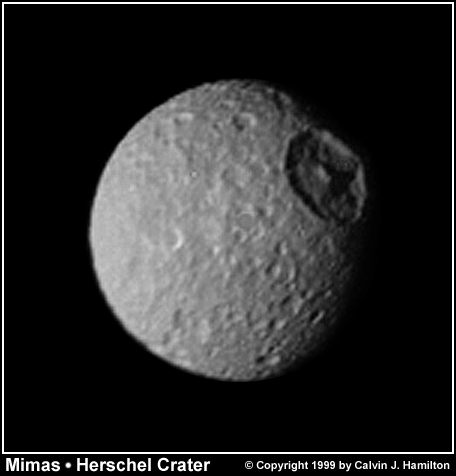Confused wrote:What collision?
The collision that led to the formation of the Odysseus impact basin on Tethys.
Saturn's moon Tethys with impact basin Odysseus.
NASA/JPL/Space Science Institute.

Saturn's moon Mimas with crater Hershel.
It is interesting to compare the two Saturnian moons, Tethys and Mimas, and their huge impact craters. Starting with the moons themselves, Tethys is larger than Mimas, with a mean radius of 531.1±0.6 km versus 198.2±0.4 km for Mimas. Mimas is also
much less massive, 6.3×10
−6 Earths (6.3 millionths of the mass of the Earth, I think) versus 1.03×10
−4 Earths (one ten thousandth of the mass of the Earth) for Tethys. As you can tell from the image at left, Tethys is really far larger than Mimas.
The Odysseus impact basin is far wider than the Herschel crater, 400 kilometers versus 130 kilometers for Herschel. According to
this page, Herschel covers 3% of the surface of Mimas, whereas Odysseus covers 4% of the surface of Tethys.
Clearly Odysseus is much shallower than Herschel, almost certainly because it is older. My extremely amateur guess is that the Odysseus impact could perhaps have melted more of the surface of Tethys and "flowed outwards" more than the impactor that created Herschel melted the surface of Mimas. But in any case: Yes, the impact on Tethys must have been larger than the impact on Mimas. But also, yes: both these moons must have been hit about as hard as they
could be hit without shattering completely.
That was a solar system one-two punch heavyweight fight, that's for sure!
Ann